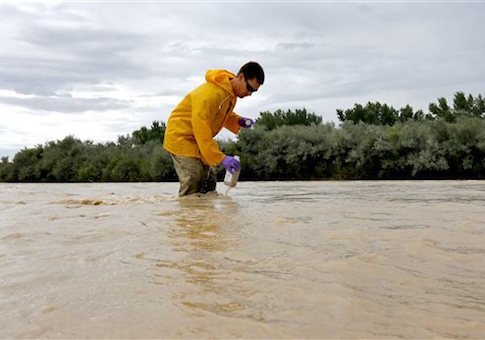Federal investigators faulted the Environmental Protection Agency (EPA) for dumping 3 million gallons of wastewater from a Colorado gold mine into the Animas and San Juan Rivers in August.
According to investigators from the Interior Department, EPA officials could have prevented the spill.
The Associated Press reported:
The spill that fouled rivers in three states would have been avoided had the EPA team checked on water levels inside the Gold King Mine before digging into its entrance, Interior Department investigators concluded. ... EPA documents show its officials knew of the potential for a major blowout from the Gold King Mine near Silverton as early as June 2014. EPA officials described the blowout as "likely inevitable" because so much water had built up inside the mine. The Interior report directly refutes that assertion and says the cleanup team could have used a drill rig to bore into the mine from above to gauge the danger of a blowout.
Engineers from the Interior Department’s Bureau of Reclamation have been probing the incident, which occurred in early August, for two months. They concluded that the EPA’s error "led directly to the failure."
However, investigators did not lay blame on any EPA officials in particular for the spill. The wastewater spilled into waters in Colorado, Utah, and New Mexico, resulting in halts in drinking water and crop irrigation supplies from the rivers.
The EPA inspector general is also probing the incident. Some estimate that the damage cost over $50 billion.
"EPA requested the Department of Interior report, Technical Evaluation of the Gold King Mine Incident, to provide an independent assessment of factors that contributed to the August 5, 2015, Gold Mine incident," EPA spokeswoman Nancy Grantham said in a statement.
"EPA will carefully review the report. This report, in combination with the findings of EPA’s internal review of the incident, will help inform EPA’s ongoing efforts to work safely and effectively at mine sites as we carry out our mission to protect human health and the environment."
UPDATE 10:00 A.M., Fri., Oct. 23: This story has been updated to reflect the statement from the EPA.
